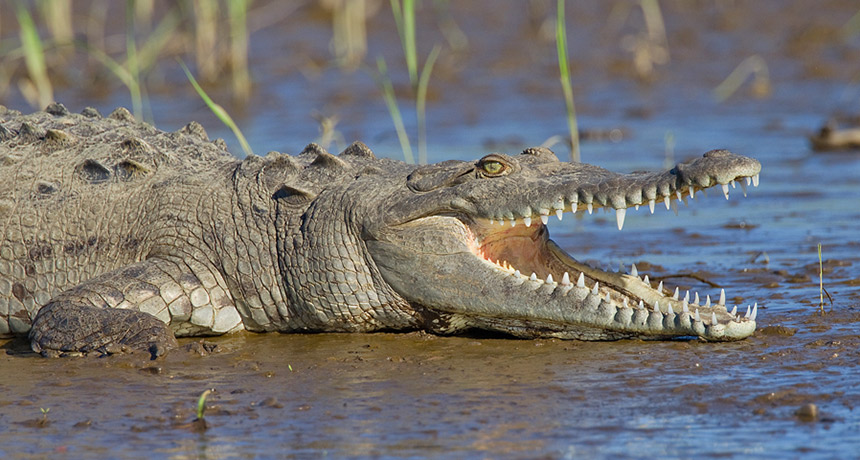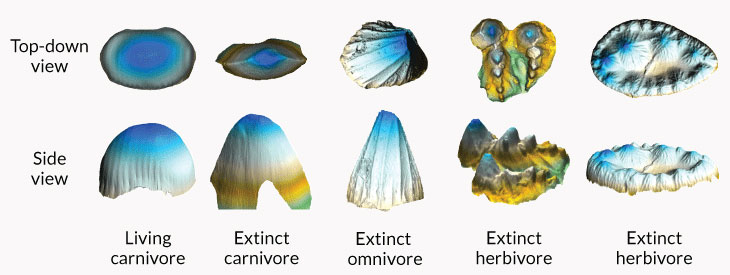Ancient crocodiles may have preferred chomping plants, not meat
Eating greens appears to have evolved in crocs at least three times more than 60 million years ago

Today’s primarily meat-eating crocodiles have simple, cone-shaped choppers. But some of their ancient kin had more complex teeth, suggesting they ate plants.
Paul Cools/iNaturalist (CC BY-NC 4.0)
Share this:
- Share via email (Opens in new window) Email
- Click to share on Facebook (Opens in new window) Facebook
- Click to share on X (Opens in new window) X
- Click to share on Pinterest (Opens in new window) Pinterest
- Click to share on Reddit (Opens in new window) Reddit
- Share to Google Classroom (Opens in new window) Google Classroom
- Click to print (Opens in new window) Print
Some extinct crocs may have been salad eaters.
Studies of fossil teeth suggest some ancient kin of modern crocodiles ate plants. These ancient plant-eating crocs evolved at least three times during the Mesozoic Era. This era stretched from about 252 million to 66 million years ago. Researchers reported their findings June 27 in Current Biology.
Today’s crocodiles eat mostly meat. Their simple, cone-shaped teeth are typical of meat eaters. Those teeth were different in certain of their ancient relatives. There was “tremendous diversity [in tooth shape] that we don’t see today,” says Keegan Melstrom. This paleontologist is a coauthor on the study. He works at the University of Utah and Natural History Museum of Utah. Both are in Salt Lake City.
Melstrom and paleontologist Randall Irmis studied scans of 146 teeth from 16 extinct crocodilians. Modern-day cousins include alligators and crocodiles. No modern crocs rely on plants as their main food.
A computer program treated the ancient teeth like mini mountains and analyzed their shape. Then it gave each tooth a score based on how complex its shape was.
The most textured teeth belong to those that rely on plants for food. The teeth of meat-eating carnivores and of omnivores are usually less complex. (Omnivores eat both plants and animals.) Elongated, sharp teeth help carnivores kill and eat their prey. Broader, bumpier teeth are more useful in tearing leaves and grinding up plants.
Comparing the fossil teeth with those from modern reptiles helped the scientists figure out what the ancient crocs likely chewed.
Some of the fossil teeth were much bumpier than those of today’s plant-eating reptiles, such as iguanas. This suggests that the ancient crocs dined mostly on plants. Other fossil teeth looked specialized to crush bones, tear meat or eat insects.

The teeth of the suspected plant eaters “really stand out,” says Domenic D’Amore. He’s a reptile specialist at Daemen College in Amherst, N.Y. “Few studies have quantified these differences,” he says. “This study really shows how different [the teeth] are.”
The researchers reviewed the family tree of ancient crocs. They found that veggie-munchers appear to have evolved at least three times during the Mesozoic.
Ancient crocs lived on land as well as in fresh and saltwater, says Patrick O’Connor. He’s an evolutionary biologist at Ohio University in Athens. This study helps to figure out how the animals fit into their ecosystems, he says.
Because plant-eating crocs lived in different kinds of environments, herbivory was likely a key strategy for survival.







